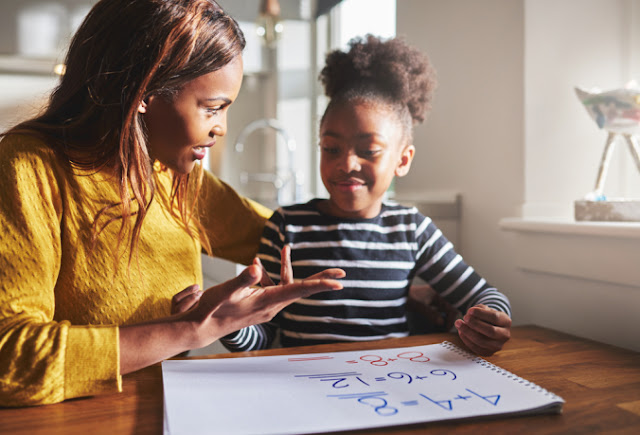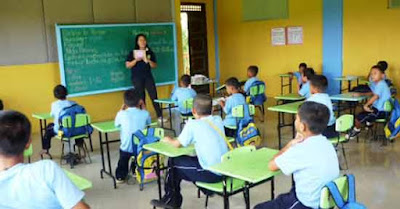How To Teach A Second Grade Child
By second grade, your child is getting the hang of the school routine and is starting to be a more confident student. Second grade is a wonderful year of self-discovery and blossoming independence.
In second grade most children practice the skills learned in earlier grades and begin to use them with ease. Some children who were not completely ready to understand all the material introduced in first grade may now be ready to master it. Second graders apply what they learned about the meanings of letters and numbers to the more complicated material, and begin to develop their analytical abilities even further.
No two kids are alike, especially when it comes to hitting developmental benchmarks. But it helps to have a rough idea of which academic and social skills your child should acquire at his or her grade level.
The following are suggestions to help you prepare your child for second grade. As you explore it, remember:
- · Success in second grade requires children to be much more independent learners than they were in first grade.
- · Parents are teachers and role models. Every day your child is learning as you talk, play and work together.
- · Readiness is a combination of age, individual growth, and experiences.
- · Children develop at their own rate; however, your involvement strongly promotes readiness.
- · Your child will learn by doing.
- · Play is an essential part of learning.
- · Your child learns best when engaged in activities that are interesting and fun.
You'll see more homework this year (maybe a lot more, depending on the school and the teacher) but you can make it fun. "Don't make it a fight or they'll get turned off," let your child relax and play when she gets home -- but don't wait till too late, either, or she'll be too tired. Talk to your child's teacher right away if your child is struggling with any skills. This is the time to get extra help and nip it in the bud early.
Here are the important learning milestones children will typically achieve in second grade, with tips for helping your child stay on track.
Reading
Kids will identify and correctly use nouns and verbs, recognize simple prefixes and suffixes, and identify simple multiple-meaning words.
In order to build reading skills: Help your child get his own library card. Expose him to a wider variety of books and genres and try out different children's magazines. Whether your child reads independently or with you, it's important to ask him about what he's read and to encourage him to retell stories. Share stories about your family and your family history or makeup stories together.
Play a homonym game by taking turns to think of pairs of words that sound the same but have different meanings, such as "deer" and "dear," or ask your second grader to think up words that have multiple meanings, such as "lie" or "fair," and talk about the differences. Continue to take turns. Your second grader will likely need some help coming up with words, so give him clues and prompts as you play.
Writing
By the end of second grade, kids will be able to write a basic story with a clear beginning, middle, and end. They will also be able to edit and revise their writing to make it clearer and to correct errors in spelling, grammar, punctuation, and capitalization.
In order to build reading skills: Encourage your child to write stories that have a logical sequence, with a small problem and a resolution. Encourage her to reread her work to make it clearer. Help your child make her own book by folding pieces of paper in half and stapling them in the middle. She'll love writing her own story and drawing pictures to illustrate it. Ask her to help write the grocery list, thank-you notes, or letters to relatives, and have her read aloud everything she's written for homework. If they wrote sentences at home for homework, they have to be able to read them,"
Number Sense
In addition to counting, reading, writing, and ordering sequential numbers up to 1,000, second graders will be able to add and subtract two-digit numbers more quickly and accurately. They will learn to add and subtract whole numbers up to three digits and will hone their understanding of place value with three-digit numbers when adding and subtracting. Second graders will also solve multistep addition and subtraction word problems, and gear up to learn simple multiplication, which will be an important third-grade skill.
In order to build reading skills: Keep pointing out the everyday math to your child. Look for word problems in real life: If your child wants to buy a new toy for five dollars, but has only two dollars, ask him how much more he'll need.
Measurement and Geometry
Second graders will measure length to the nearest inch or centimeter. They will be able to describe geometric shapes and classify them according to the number and shape of faces, edges, and vertices (corners).
In order to build reading skills: Bring out the measuring tape and have your child measure parts of her body (waist, arm, foot, head) and compare the lengths to those of a sibling or friend. Have her identify the differences in inches and centimeters. During breakfast, ask her to count the number of faces, edges, and vertices on a cereal box and then ask, "Do all cereal boxes have the same amount?" Go on a "symmetry hunt" at home and have your child find symmetrical shapes on the carpet, bed sheets, bathroom tiles, or other places. Look for and analyze 3-D shapes, such as marbles and oranges (spheres), soup cans and jelly jars (cylinders), and building blocks and cardboard boxes (cubes). You can even have her draw 2-D shapes (a circle) on a piece of paper then match it to a corresponding 3-D shape (a sphere).
Telling Time
Kids this age will tell time to the nearest quarter-hour and will understand relationships and units of time, such as a number of minutes in an hour, hours in a day, and days in a month. They have a better grasp of when things happened or will happen.
In order to build reading skills: Once your child understands the quarter hour, talk about 5-minute intervals, pointing out when the clock says five after, ten after, and so on. Keep track together of the time he spends watching TV, playing computer games, and doing homework each day. Write the times down and compare the amounts. Consider giving your child his own wristwatch (analog or digital) to give him the extra dose of incentive he needs to master the intricacies of telling time.
I hope you’ve enjoyed this article as much as I loved writing it for you. I hope you’ve also got a ton of value from it too.
I appreciate you for taking the time out of your busy schedule to read this material. If you liked what you read and these ideas make sense to you, then why not follow the footsteps of my other successful students.
Download the complete guide How to Identify Your Child’s Learning Style in PDF text, which works on desktop computers, laptops, tablets and mobile phones.
You will also receive two free bonuses, a checklist for identifying learning styles and the top five tips for working parents all designed to help you get up and running with your child or student education.
Click here and download the file.
Also if you haven’t already, you can join my subscribers and enjoy a FREE Email Course design to help you improve performance whilst encouraging the love for learning.
Feel free to share this article with your friends and loved ones.
Do you have a 1st-grade child at home? What strategies do you use to help him/her at home? Share your experience with us in the comment space below.
Best Regards




Comments
Post a Comment